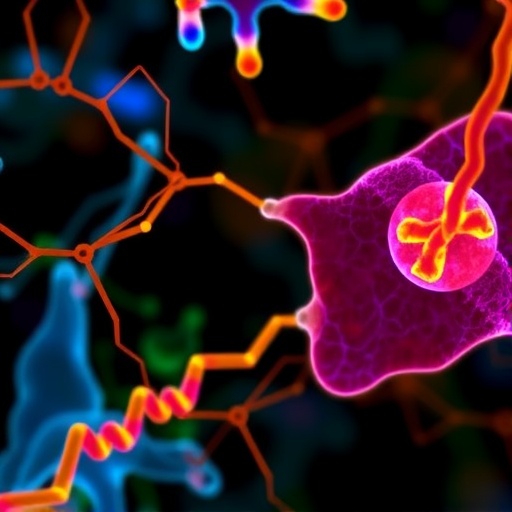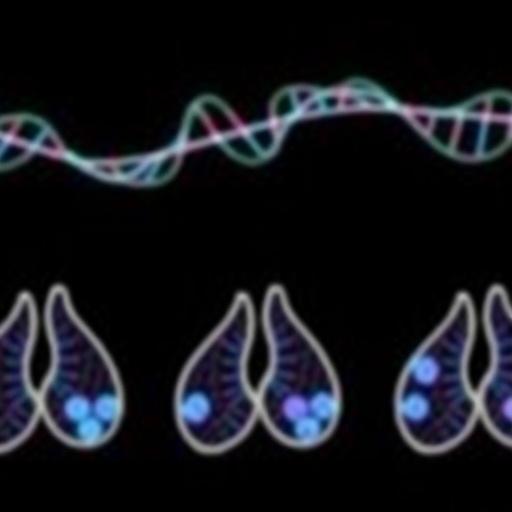CHOP/Penn researchers: Study supports expanded use of proton therapy to minimize radiation exposure to healthy, developing organs
Researchers from Children’s Hospital of Philadelphia (CHOP) and the Perelman School of Medicine at the University of Pennsylvania analyzed the largest cohort to date of pediatric patients with high-risk neuroblastoma treated with proton radiation therapy (PRT), finding both that proton therapy was effective at reducing tumors and demonstrated minimal toxicity to surrounding organs.
The study is published online in the International Journal of Radiation Oncology.
“These data are extremely encouraging and could be a game-changer for a number of reasons,” said lead author Christine Hill-Kayser, MD, Chief of the Pediatric Radiation Oncology Service at Penn Medicine and an attending physician at CHOP. “Not only did we observe excellent outcomes and minimal side effects that validate the use of PRT in high-risk neuroblastoma patients, we answered a lingering question about proton therapy–the concern that because it is so targeted, tumors may come back. Tumors mostly did not come back – suggesting PRT is effective, less toxic and a superior choice for our young patients who must endure intense treatment modalities in an effort to cure this high-risk cancer.”
Neuroblastoma is the most common cancer in infants, accounting for more than 10 percent of all childhood cancer deaths. Primary neuroblastoma tumors are commonly adrenal tumors, which are very close to the kidney, liver, pancreas and bowel in children, making them hard to treat without harming vital organs in tiny bodies. Treatment usually involves a combination of therapies including chemotherapy, radiation and surgery.
Researchers studied 45 patients with high-risk neuroblastoma who received PRT at both institutions between 2010 and 2015. CHOP cancer patients who need radiation therapy are treated at Penn Medicine, including PRT through the Roberts Proton Therapy Center.
Unlike traditional photon radiation using x-rays, PRT is a non-invasive, precise cancer treatment that uses a beam of protons moving at very high speeds to destroy the DNA of cancer cells, killing them and preventing them from multiplying. Highly targeted, PRT has significant promise for treating tumors in very young children and may reduce radiation exposure to healthy, developing tissue that may result in lifelong impacts.
Five years after treatment, the longest recorded period of study in the largest cohort of patients to date, researchers observed excellent outcomes, with 82 percent of patients still alive, and 97 percent free of a primary site tumor reoccurrence.
Toxicities, or side effects, are measured on a scale from 1 to 5, with 5 being the most severe. No patient observed in the study experienced grade 3 or 4 long-term acute liver or kidney toxicity, with the majority of patients experiencing grade 1 side effects from PRT.
“We’ve showed PRT is not only effective in the treatment of high-risk neuroblastoma, but it also spared damage to the developing liver, kidneys and bowel that may occur in pediatric patients exposed to traditional radiation,” said Hill-Kayser. “While we look forward to longer-range data on these patients 10 years down the road, the excellent outcomes we see here, coupled with the fact the precision proton approach did not increase recurrence rates, support the expanded use of proton therapy in neuroblastoma and other high-risk childhood cancers.”
Additional studies with extended follow-up and larger patient numbers are planned.
The Cancer Center at Children’s Hospital of Philadelphia offers one of the most established and experienced pediatric proton radiation therapy programs, in collaboration with Penn Medicine at the Roberts Proton Therapy Center. For more information, please click here: Pediatric Proton Therapy Center.
###
This research was supported by institutional funds, without additional grant support.
Christine E. Hill-Kayser, MD et al, “Outcomes After Proton Therapy for Treatment of Pediatric High-Risk Neuroblastoma,” International Journal of Radiation Oncology, online 2019.
Penn Medicine is one of the world’s leading academic medical centers, dedicated to the related missions of medical education, biomedical research, and excellence in patient care. Penn Medicine consists of the Raymond and Ruth Perelman School of Medicine at the University of Pennsylvania (founded in 1765 as the nation’s first medical school) and the University of Pennsylvania Health System, which together form a $7.8 billion enterprise.
The Perelman School of Medicine has been ranked among the top medical schools in the United States for more than 20 years, according to U.S. News & World Report’s survey of research-oriented medical schools. The School is consistently among the nation’s top recipients of funding from the National Institutes of Health, with $405 million awarded in the 2017 fiscal year.
The University of Pennsylvania Health System’s patient care facilities include: The Hospital of the University of Pennsylvania and Penn Presbyterian Medical Center — which are recognized as one of the nation’s top “Honor Roll” hospitals by U.S. News & World Report — Chester County Hospital; Lancaster General Health; Penn Medicine Princeton Health; Penn Wissahickon Hospice; and Pennsylvania Hospital — the nation’s first hospital, founded in 1751. Additional affiliated inpatient care facilities and services throughout the Philadelphia region include Good Shepherd Penn Partners, a partnership between Good Shepherd Rehabilitation Network and Penn Medicine, and Princeton House Behavioral Health, a leading provider of highly skilled and compassionate behavioral healthcare.
Penn Medicine is committed to improving lives and health through a variety of community-based programs and activities. In fiscal year 2017, Penn Medicine provided more than $500 million to benefit our community.
Children’s Hospital of Philadelphia: Children’s Hospital of Philadelphia was founded in 1855 as the nation’s first pediatric hospital. Through its long-standing commitment to providing exceptional patient care, training new generations of pediatric healthcare professionals, and pioneering major research initiatives, Children’s Hospital has fostered many discoveries that have benefited children worldwide. Its pediatric research program is among the largest in the country. In addition, its unique family-centered care and public service programs have brought the 564-bed hospital recognition as a leading advocate for children and adolescents. For more information, visit http://www.
###
Media Contact
Amy Burkholder
[email protected]
215-284-6177




